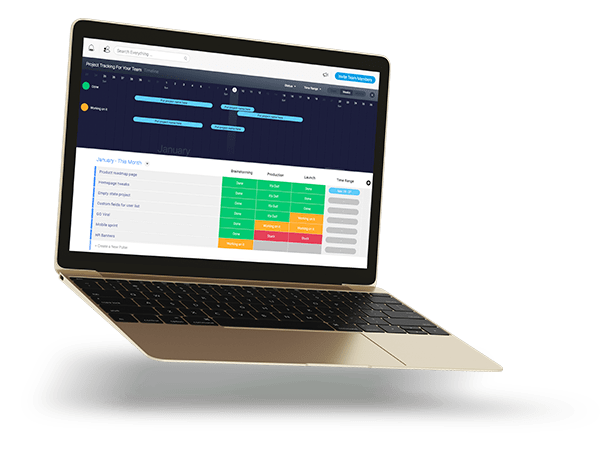Today we’d like to put the spotlight Parchment — a revolutionary web service. Parchment allows learners, academic institutions and employers to request, verify and share credentials simply and securely.
The platform has helped millions of people and thousands of schools to exchange more than 20 million transcripts and other credentials globally.
We interviewed Ken Arendt, a UX specialist in charge of Parchment’s product development and design. We talked about the company’s growth and about how it uses monday.com to manage product design.
Question: When and how did Parchment start out?
A: Parchment began in 2003, in a small office in Los Angeles. It was initially named Docufide and it built an electronic transcript platform, allowing high schools to send student transcripts to colleges in digital format. In 2011, Matthew Pittinsky, former co-founder of Blackboard, Inc. invested in the company. He became the CEO, moved the 20+ person company to Scottsdale, AZ and changed its name to Parchment.
Q: Where is the company at today?
A: Today, Parchment employs more than 120 people. We have offices in Roseville, CA, Denver, CO, Grand Rapids, MI, Washington D.C. and Toronto. Scottsdale remains the organization’s corporate headquarters.
Q: How did Parchment grow its business?
A: Parchment was able to grow the business through a series of acquisitions and a strong sales force. The sales team effectively demonstrates to schools how the service empowers students. The series of acquisitions was made possible after the Pittinsky-led Parchment raised investor capital. The acquisitions grew the organization, expanded locations and increased the size of the company. With those changes, came a new focus on expanded services. Parchment was now working with high schools and colleges to send and receive transcripts electronically. This makes the transcript portion of college application available online for students.
Q: How does Parchment improve the lives of its users and contributes to their success?
A: Students using Parchment are able to track their transcript order from beginning to end. Kind of like the Domino’s Pizza tracker. The college application process can be stressful, and students no longer need to call admissions offices to confirm receipt of transcript documents that often complete an application.
“College application is stressful enough without having to call admission offices. With Parchment, tracking your transcript order is as easy as using the Domino’s Pizza tracker.”
Q: How does Parchment measure its own success?
A: Parchment measure success through three KPIs:
- Network Reach
- Adoption
- Credential Delivery Experience
The network reach is measured through a metric of serviceable learners. That is the total number of students that have access to Parchment, through the schools that joined the Parchment Member Network.
The adoption is measured by dividing the number of serviceable learners by the number of transcript transactions.
Credential Delivery Experience is measured bi-annually through our Net Promoter Score.
Q: How does Parchment use monday.com?
A: monday.com was initially adopted by our design team, to help streamline our product design process and product management
process. As a company with several offices in different geographic locations, monday.com is an effective tool for sharing design concepts. It lets us quickly collect feedback from remote teams and record a history of the design choices and process evolution.
monday.com gives us the ability to manage efficient design reviews in real time. It allows the design team to iterate concepts very rapidly. The ability to see which team members have viewed a Pulse thread and which have not — — without having to reach out via a separate communication channel — is invaluable.
monday.com helps our product team keep others within the organization informed about what’s being worked on. And the Boards view give us the ability to provide status updates at a glance, for any team members who are curious about where things are in the design process.

Q: What pain does monday.com solve?
A: The communication pain. Here’s an example: In a recent project it was awesome to see Matt (our CEO) providing feedback on design concepts from an airplane on the other side of the world. This is the type of thing that would be difficult to do through email threads or in person at times due to our busy schedules.
monday.com is ideal for collaboration between our designers and product managers. With monday.com, we have an easily accessible forum to facilitate discussions. We create different Boards for various purposes. We have Boards for collecting user feedback, research and product planning, and isolated projects, but primarily we use our main Board to track against development sprint cycles. This really gives us a clear view of priorities and status.
Q: What added value does monday.com supply you?
A: Since adopting monday.com, we’ve been able to include more team members further up steam in the design process. This gives us the ability to get much needed early feedback from a variety of viewpoints, and to open up the process to a broader team has brought our development process closer together. monday.com is used by a growing number of users everyday within our organization and has become a tool which has allowed us to redefine how we build cutting edge software.

